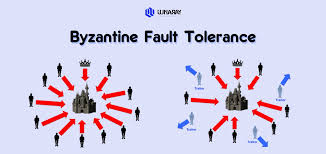In the world of decentralized computing, Byzantine Fault Tolerance (BFT) plays a critical role in maintaining trust, security, and consensus—especially in blockchain and other distributed systems. As organizations and technologies increasingly rely on decentralized architectures, understanding Byzantine Fault Tolerance becomes essential for developers, investors, and cybersecurity experts alike.
This article explores what Byzantine Fault Tolerance is, why it matters, how it works, and where it’s being used today to secure some of the most advanced technologies in digital infrastructure.
What Is Byzantine Fault Tolerance?
Byzantine Fault Tolerance refers to a system’s ability to continue operating correctly and reach consensus even when some of its components fail or act maliciously. These components—often referred to as nodes—may send false or contradictory information to others, either due to technical faults or deliberate attacks.
The concept originates from the “Byzantine Generals’ Problem,” a thought experiment introduced in a 1982 paper by Leslie Lamport, Robert Shostak, and Marshall Pease. The problem illustrates the difficulty of achieving consensus in a system where some actors may be unreliable or deceitful.
In essence, BFT is a solution to this problem: it enables a distributed network of nodes to agree on a single source of truth, even when some nodes are compromised.
Why Is Byzantine Fault Tolerance Important?
In distributed systems like blockchains, cloud storage, or peer-to-peer networks, there’s no single trusted party. Every participant (or node) must work together to validate transactions and share data. But what happens if some nodes fail, are hacked, or intentionally send wrong information?
Without a robust fault tolerance mechanism, the entire network could collapse or behave unpredictably. This is where Byzantine Fault Tolerance is vital—it ensures that:
- The system remains functional even if some nodes are malicious.
- Honest nodes can reach consensus without relying on a central authority.
- Data integrity and security are maintained.
For blockchain, BFT is foundational. Protocols like PBFT (Practical Byzantine Fault Tolerance), Tendermint, and HotStuff are used by networks such as Cosmos, Hyperledger, and Facebook’s (Meta’s) Diem, respectively.
How Byzantine Fault Tolerance Works
Byzantine Fault Tolerant systems rely on algorithms designed to maintain consensus in the presence of faulty or rogue nodes. These algorithms generally follow this logic:
- Node Communication: Each node shares its information or “vote” with all other nodes.
- Message Validation: Nodes verify received messages and compare them against others.
- Majority Agreement: A consensus is reached when a certain threshold (typically two-thirds or more) of nodes agree on the same outcome.
- Decision Finalization: Once the consensus threshold is met, the system commits to the result.
A classic example is PBFT, which can tolerate up to (n-1)/3 faulty nodes in a system of n nodes. This means in a network of 10 nodes, the system can handle up to 3 malicious actors without compromising consensus.
However, BFT solutions face challenges such as communication overhead and scalability. That’s why newer consensus algorithms are continually evolving to improve efficiency without sacrificing security.
Real-World Use Cases of BFT
1. Blockchain Networks
Many Proof-of-Stake (PoS) blockchains incorporate BFT to ensure security and finality. For example:
- Tendermint Core, used by the Cosmos Network, implements a BFT consensus mechanism that allows fast finality and scalability.
- Algorand uses a variant of BFT to select committees randomly and securely.
- Hyperledger Fabric, a permissioned blockchain for enterprises, employs BFT to ensure transaction validity in closed networks.
2. Cloud and Distributed Databases
Systems like Google Spanner or Apache Cassandra depend on BFT-like mechanisms to maintain data consistency across nodes, especially in the presence of latency, network partitions, or node failures.
3. Aerospace and Critical Infrastructure
In sectors like aerospace, BFT is used in flight control systems and autonomous vehicles, where tolerating faults and maintaining consensus can be a matter of life and death.

Limitations of Byzantine Fault Tolerance
Despite its strengths, BFT also has trade-offs:
- Scalability Issues: As the number of nodes increases, communication complexity rises exponentially. This can limit BFT’s applicability in large-scale public blockchains.
- High Network Overhead: Consensus algorithms like PBFT require constant communication between nodes, which can be bandwidth-intensive.
- Latency: BFT-based consensus mechanisms may take longer to finalize decisions compared to simpler fault-tolerant models.
To address these limitations, hybrid models (e.g., combining BFT with Proof of Stake or Delegated Proof of Stake) and newer algorithms (like HotStuff) aim to enhance BFT performance in practical environments.
The Future of Byzantine Fault Tolerance
As distributed systems become increasingly central to digital economies—think decentralized finance (DeFi), supply chain management, and IoT networks—the demand for robust consensus models like BFT will only grow.
Research continues into optimizing BFT algorithms for better scalability, lower latency, and improved energy efficiency. Innovations such as asynchronous BFT and AI-assisted consensus mechanisms are on the horizon, promising to make BFT even more adaptable and powerful.
Conclusion
Byzantine Fault Tolerance is not just a theoretical concept—it’s a cornerstone of modern decentralized computing. From blockchain to cloud infrastructure, BFT ensures that systems can operate securely and reliably, even in the presence of faults or malicious actors.
As Web3 and distributed technologies continue to expand, the role of BFT in ensuring trustless consensus and system resilience will only become more critical. For developers, businesses, and tech-savvy investors, understanding BFT is key to navigating and building the decentralized future.








Leave A Reply